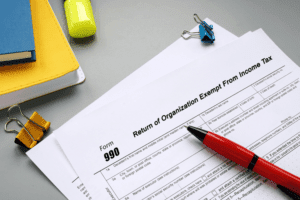8 4 Compute and Evaluate Overhead Variances Principles of Accounting, Volume 2: Managerial Accounting

For this example, we’ll say the marketing agency estimates that it will work 2,500 hours in the upcoming year. Also, if the rates determined are nowhere close to being compute predetermined overhead rate accurate, the decisions based on those rates will be inaccurate, too. Once costs are broken down, small businesses can assess if any categories are excessive.
Computing Actual Overhead Costs
All of our content is based on objective analysis, and the opinions are our own. While it may become more complex to have different rates for each department, it is still considered more accurate and helpful because the level of efficiency and precision increases. This information can help you make decisions about where to cut costs or how to allocate your resources more efficiently. Once you have a good handle on all the costs involved, you can begin to estimate how much these costs will total in the upcoming year. Despite what business gurus say online, “overhead” and “all business costs” are not synonymous.
What expenses are not considered overhead costs?
- Now, let’s look at some hypothetical business models to see actual use-cases for predetermined overhead rates.
- In some industries, the company has no control over the costs it must pay, like tire disposal fees.
- Again, that means this business will incur $8 of overhead costs for every hour of activity.
- At all points in the process, the work in process should include the cost of direct materials and direct labor.
- 11 Financial’s website is limited to the dissemination of general information pertaining to its advisory services, together with access to additional investment-related information, publications, and links.
- This can result in abnormal losses as well and unexpected expenses being incurred.
It can be used to allocate overhead when calculating product costs and profits. The formula for a predetermined overhead rate is expressed as a ratio of the estimated amount of manufacturing overhead to be incurred in a period to the estimated activity base for the period. To calculate the predetermined overhead rate, the marketing agency will need to add up all of its estimated overhead https://www.bookstime.com/articles/what-is-book-balance costs for the upcoming year. The overhead rate is a cost allocated to the production of a product or service. Overhead costs are expenses that are not directly tied to production such as the cost of the corporate office. To allocate overhead costs, an overhead rate is applied to the direct costs tied to production by spreading or allocating the overhead costs based on specific measures.
Should you have predetermined overhead rates for each department of your business?
Small companies tend to use activity-based costing, whereas in larger companies, each department in which different processes of production take place typically computes its own predetermined overhead rate. Hence, the overhead incurred in the actual production process will differ from this estimate. In summary, overhead rates have a sizable impact on a company’s key financial statements and decisions. Investing time into overhead analysis and accurate calculation of rates leads to better accounting and superior business management.
Setting pricing

Once a company has determined the overhead, it must establish how to allocate the cost. This allocation can come in the form of the traditional overhead allocation method or activity-based costing.. A predetermined overhead rate is calculated at the start of the accounting period by dividing the estimated manufacturing overhead by the estimated activity base. The predetermined overhead rate is then applied to production to facilitate determining a standard cost for a product. To summarize the job order cost system, the cost of each job includes direct materials, direct labor, and manufacturing overhead.

Determining the Costs of an Individual Job Using Job Order Costing
- The amounts in raw materials, work in process, and finished goods inventories compose the total cost for each account, whereas the job cost sheets contain the costs for each individual job.
- Yes, it’s a good idea to have predetermined overhead rates for each area of your business.
- Overhead expenses are generally fixed costs, meaning they’re incurred whether or not a factory produces a single item or a retail store sells a single product.
- This chapter will explain the transition to ABC and provide a foundation in its mechanics.
- Overhead rates refer to the allocation of indirect costs to the production of goods or services.
- Hence, the overhead incurred in the actual production process will differ from this estimate.
- For example, the cost of Job 2B47 at Yost Precision Machining would not be known until the end of the year, even though the job will be completed and shipped to the customer in March.
One of the advantages of predetermined overhead rate is that it can help businesses monitor overhead rate. A business can calculate its actual costs periodically and then compare that to the predetermined overhead rate in order to monitor expenses throughout the year or see how on-target their original estimate was. This comparison can be used to monitor or predict expenses for the next project (or fiscal year). Using the predetermined overhead rate formula and calculation provides businesses with a percentage they can monitor on a quarterly, monthly, or even weekly basis. Businesses monitor relative expenses by having an idea of the amount of base and expense that is being proportionate to each other. This can help to keep costs in check and to know when to cut back on spending in order to stay on budget.

Built-in analytics help uncover spending trends and quickly flag unusual variances for further investigation. Using small business accounting software centralizes overhead tracking and analysis. Features like automated categorization and reporting provide real-time visibility into overhead costs. Carefully tracking overhead expenses is key for small businesses to optimize costs. This involves categorizing all overhead costs and regularly analyzing them to identify potential savings.



